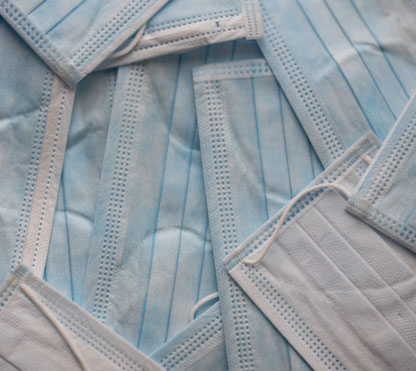Medical Mask Testing Requirements
What is medical mask?
Medical mask is a loose-fitting, disposable mask that is considered as medical device. It is fluid resistant and designed to protect wearers from large droplets such as blood, splashes, or sprats of bodily or other hazardous fluids. Wearer’s mouth and nose will be covered to create a barrier for minimizing the direct transmission of infective agents.
Medical mask is mainly categorized into two types: non-sterile and sterile. The former is intended for use by patients or other wearers, the latter is intended for use by healthcare professionals in medical settings. Both types of medical mask are subject to strict regulations in different countries before being made commercially available.
Regulatory compliance requirements in different markets
Market-Specific Regulatory Compliance | ||||
| Country | Primary Regulation | Performance Standard | Classification | Requirement |
| Australia | Therapeutic Goods (Medical Devices) Regulations 2002 | AS 4381:2015 | Level 1 | BFE≥ 95% |
| Level 2 | BFE ≥ 98% | |||
| Level 3 | BFE ≥ 98% | |||
| Brazil | Resolution RDC 185/2001 | ABNT NBR 15052:2004 | - | BFE ≥ 95% and PFE ≥ 98% |
| Canada | SOR/98-282 | ASTM F2100-19 | Level 1 | BFE ≥ 95% |
| Level 2 | BFE ≥ 98% and PFE ≥ 98% | |||
| Level 3 | BFE ≥ 98% and PFE ≥ 98% | |||
| China | Regulations for the Supervision and Administration of Medical Devices | YY/T 0969-2013 | Single-use Medical Face Mask | BFE ≥ 95% |
| YY 0469-2011 | Surgical Mask | BFE ≥ 95% and PFE≥ 30% | ||
| Technical requirements for protective face mask for medical use | GB 19083-2010 | Class 1 | PFE ≥ 95% | |
| Class 2 | PFE ≥ 99% | |||
| Class 3 | PFE ≥ 99.97% | |||
| Technical specification of daily protective mask | GB/T 32610-2016 | Class 1 | Salt medium ≥ 99% and Oil medium ≥ 99% | |
| Class 2 | Salt medium ≥ 95% and Oil medium ≥ 95% | |||
| Class 3 | Salt medium ≥ 90% and Oil medium ≥ 80% | |||
| Technical specification of children mask | GB/T 38880-2020 | Protective mask | PFE ≥ 95% | |
| Hygiene mask | PFE ≥ 90% and BFE ≥ 95% | |||
| EU | Directive 93/42/EEC | EN 14683-2019+AC:2019 | Type I | BFE ≥ 95% |
| Type II | BFE ≥ 98% | |||
| Type IIR | BFE ≥ 98% | |||
| India | - | IS 16289:2014 | Class 1 | BFE ≥ 95% |
| Class 2 | BFE ≥ 98% | |||
| Class 3 | BFE ≥ 98% and PFE ≥ 98% | |||
| United States | 21 CFR Subchapter H | ASTM F2100-19 | Level 1 | BFE ≥ 95% |
| Level 2 | BFE ≥ 98% and PFE ≥ 98% | |||
| Level 3 | BFE ≥ 98% and PFE ≥ 98% | |||
| FDA 21 CFR 878.4040 | ASTM F1862 | Level 1 | Level 1: 80 minimum pressure in mm Hg | |
| Level 2 | Level 2: 120 minimum pressure in mm Hg | |||
| Level 3 | Level 3: 160 minimum pressure in mm Hg | |||
| FDA 21 CFR 878.4040 | 16 CFR 1610 | Class 1 | Class 1 (Lower class with label) | |
Key test parameters
While there are many testing parameters for measuring the quality and performance attributes of medical mask, below are key testing parameters to take note of:
| Test Parameter | Test Objective | Measurement |
| Bacterial Filtration Efficiency (BFE) | Resistance of the mask against bacterial agents | Results are reported as percentage efficiency rating. The higher the number in this test indicates better barrier efficiency |
| Particle Filtration Efficiency (PFE) | Resistance of the mask against particles larger than 1 micron | Results are reported as percentage efficiency rating. The higher the number in this test indicates better filtration efficiency* |
| Fluid Resistance Testing | Resistance of the mask against liquid splashes such as blood or other bodily fluids | Results are reported as pressure with or without any fluid penetration observed at the back side of mask. The higher value without penetration indicates better fluid resistance. |
| Breathability Testing – Differential Pressure | Easiness of the wearer to breath comfortably in the mask | Lower breathing resistance indicates a better level of comfort for the wearer |
| Microbial Cleanliness | Total number of viable micro-organism on the mask | Results are reported in units of micro-organism, lower the value higher level of cleanliness |
*higher filtration efficiency usually indicates a greater difficulty for air to pass through the mask. In this case, breathability testing is recommended.

